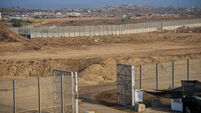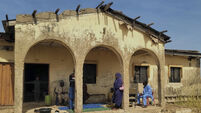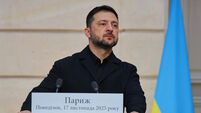Normandy landings paved way for victory
With the simple words “Okay, let’s go” General Dwight Eisenhower set in motion the greatest military attack in history.
On June 6, 1944, some 156,000 British, American and Canadian troops landed and parachuted on to French soil in an effort to free Europe from Nazi tyranny. Many thousands more served on board the 6,000 troop ships, landing crafts and barges off the Normandy coast in northern France.
Then prime minister Winston Churchill described the operation as “undoubtedly the most complicated and difficult that has ever taken place”.
The Queen echoed those sentiments at the 60th anniversary commemorations five years ago when she visited Normandy to honour the “courageous and determined” heroes of the campaign and described the invasion as “one of the most dramatic military operations in history”.
Thousands of paratroopers were dropped behind the enemy lines to capture bridges — including the vital Pegasus Bridge — railway lines and roads to prevent the German army sending reinforcements once the Allies landed.
Between the hours of 3am and 5am on June 6, more than 1,000 British aircraft dropped some 5,000 tons of bombs.
Tip-offs from French Resistance fighters, who also carried out over 1,000 sabotage attacks, helped the allies target their bombing campaign to cause maximum disruption for the Germans.
A main target was the Atlantic Wall, a network of concrete gun emplacements, machine gun nests, tank traps and mines, barbed wire and booby traps that the Germans had built up since 1940 along France’s west coast.
The allies had tricked the enemy into believing the main attack would come in the Pas de Calais, not Normandy.
Consequently, the beaches were less heavily defended and the allies had almost total air superiority once they launched D-Day 24 hours later than originally planned because of bad weather.
Each of the landing beaches was given a code name on the allies’ secret map. The British and Canadians landed on Gold, Juno and Sword beaches to the east, while the Americans went ashore at Utah and Omaha beaches in the west.
Many troops were violently seasick, some drowned, while others were gunned down as soon as landing craft opened their hatches.
Men sheltered behind sand dunes, broken equipment and dead comrades in the carnage amid efforts to scramble to safety over the beach.
The last beach to be taken, at Omaha, proved the hardest for the men of the 1st and 29th Infantry divisions and Army Rangers.
The battle was only won when the Germans ran out of ammunition.
The struggle was immortalised by movie director Steven Spielberg at the beginning of his film Saving Private Ryan.
The naval campaign to land troops ashore, code named Neptune, was backed up by Overlord, the ground campaign masterminded by Field Marshall Bernard Montgomery. It took 80 days to liberate Normandy.
Exact figures for allied fatalities on D-Day itself are not available but the latest estimate puts the toll at 4,400.
But D-Day established another front, locking Germany into conflict in France, Italy and Russia. It helped overwhelm Hitler’s Nazi Reich and led eventually to the allies’ victory in Europe in May 1945.
Historians disagree on the fierce fighting that took place in the battle for Caen, a strategic position which the Allies hoped to capture on D-Day itself but took almost two months.
French civilians were trapped in the city as it was reduced to rubble and up to 5,000, although the figure is disputed, were killed by two major RAF bombing raids on D-Day and July 7.














